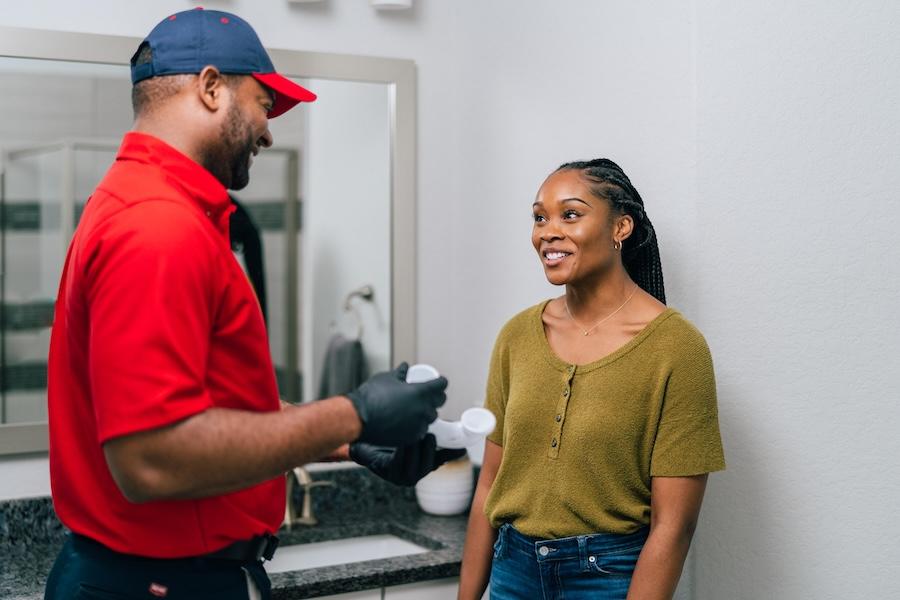Call This Friday to Get $50 Off
Schedule a Local Plumber in Morgantown Area - Call us Now to Get $35 OFF.
4.8 / 5 Ratings based on 794 reviews Great Plumbers, Great Reviews
Call This Friday to Get $50 Off
Schedule a Local Plumber in Morgantown Area - Call us Now to Get $35 OFF.

Nice warm baths are the main source of relaxation for many people, especially after a long day. However, this relaxing activity might be ruined when your bathtub doesn’t drain or drains slowly afterwards. Even though this scene sounds stressful, most of the time, the issue is simpler to resolve than you might imagine. In this guide, we will try to go over some of the methods you can try to solve this situation. Of course, if after trying these, the problem still persists, you should definitely seek out professional help from a plumber.
Before starting anything, try to take a close look at the built-in stopper. Normally, when the tub for a bath is filled, a stopper is used to keep the water from draining. The built-in stopper in the tub can sometimes be stuck, and that can be the reason why the water doesn’t drain properly. If you notice that this is the case, you may carefully remove the plug from the drain with pliers. If the stopper isn’t stuck, you should still take off the drain cover and remove any hair or debris that is visible with either your fingers or with tweezers. Even though this seems like a basic step, if you do this before doing anything else, you’ll be increasing your chances of solving this problem.
This is one of the most commonly used DIY methods when it comes to dissolving clogs. All you have to do is boil water and put it in a container that is easy to carry and slowly pour it down the drain. Wait for fifteen minutes before trying to run water from the tap. The heat can greatly help if the clogs are small and soap-based. However, if you have PVC pipes, proceed with caution, as the intense heat may harm them.
The plunger has been the tried-and-true method for clogs for many years, and you can use it for bathtub clogs as well. First, you need to cover the drain opening in the tub with a few inches of water (which probably already is there if the water doesn’t drain). Then, make sure the plunger is properly sealed when you place it over the drain. Afterwards, try your best to plunge for the next minute and then see if the water drains. You can repeat this process as many times as you need.
If the heat itself couldn’t do the trick, you can use one of the most beloved home recipes of all time—vinegar and baking soda. First, add half a cup of baking soda and then pour half a cup of white vinegar into the drain. These two will start a chemical reaction; after bubbling stops, pour two liters of boiling water down the drain.
If you’ve tried all these methods but none of these work, or if the clog keeps reoccurring, it may be time to call a plumber. Every homeowner deals with clogs at some point, but recurring clogs could indicate a bigger issue deeper in your plumbing system, which needs to be checked by a professional plumber. If you’re looking for a reliable plumbing company that offers a variety of plumbing services, today’s your lucky day. Professionals of Mr. Rooter Plumbing are here to help you with clogged drain cleaning in Greene County, PA as well as your other plumbing concerns. All you have to do is contact our professionals today and schedule your appointment.
Nice warm baths are the main source of relaxation for many people, especially after a…
Read More+It Might Be Time to Replace Your Sump Pump If you are…
Read More+Signs That Water Heater Repairs Are Necessary Water heaters are crucial to…
Read More+